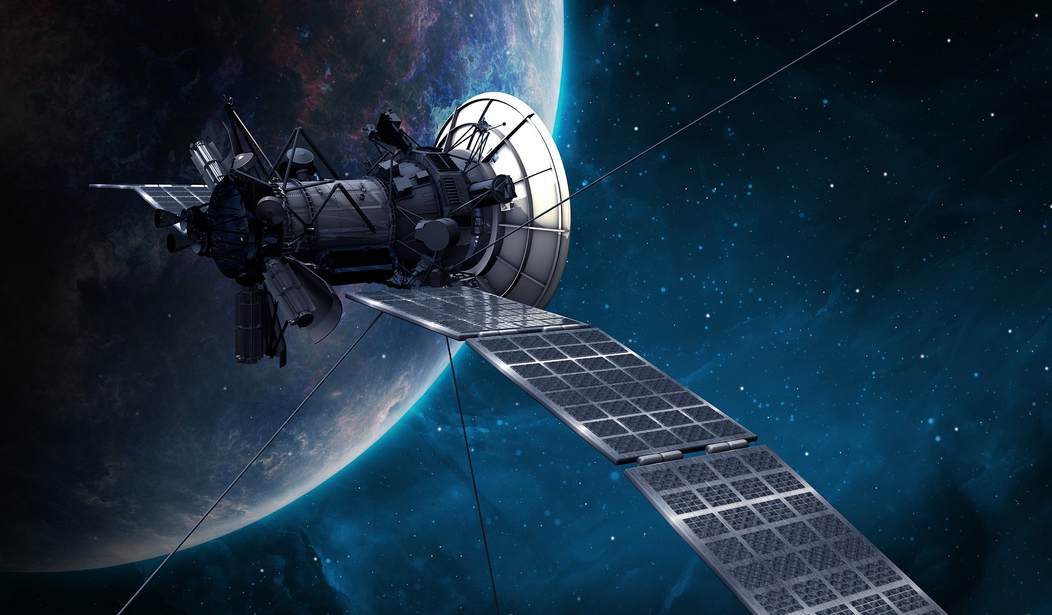Can you believe it's Friday again already? For a change, there's not been a ton of space news, so it's a chance to focus on the pretty stuff. Like aurora. From the ground in Iceland ...
Aurora exploding over Black Church, Iceland pic.twitter.com/WZs4EXUGXs
— Nature is Amazing ☘️ (@AMAZlNGNATURE) April 9, 2025
... and the view from above.
Insane footage from the ISS orbiting over auroras yesterday pic.twitter.com/QGXqBgaYYY
— Latest in space (@latestinspace) April 6, 2025
Imagine seeing this from above.
Aurora seen today from @Space_Station while orbit was passing between Australia and Antartrica; photographer @astro_jannicke now on the private FRAM2 space mission will be having an even better view in their polar orbit. pic.twitter.com/8IIiWBDtu8
— Don Pettit (@astro_Pettit) April 4, 2025
Fun footage of the Soyuz approaching and docking at the ISS. Sped up considerably, but great to watch ...
Footage of the Soyuz spacecraft docking with the International Space Station pic.twitter.com/GQBEvVlp6g
— Black Hole (@konstructivizm) April 7, 2025
... and today's soundtrack.
Moving out a ways, we see storms on Saturn. You could drop the whole Earth into that.
This is what a hurricane on Saturn looks like.
— Black Hole (@konstructivizm) April 4, 2025
NASA pic.twitter.com/ThjSjbMadu
A new comet. From my research assistant:
Comet C/2025 F2 (SWAN), previously dubbed SWAN 25F before its official name, is a fresh visitor from the Oort Cloud, spotted in late March 2025 by amateur astronomers using data from the SWAN instrument on the SOHO spacecraft. This icy rock, likely a few miles across, follows a roughly 70,000-year orbit, making it a rare guest in our skies.
Currently, it’s gliding through Pegasus in the pre-dawn sky, shining at about magnitude 8—too dim for naked eyes but visible with binoculars or a small telescope. Its green coma, a fuzzy glow spanning a few arcminutes, comes from diatomic carbon molecules energized by sunlight. A wispy ion tail, stretching over 2 degrees, shows twists sculpted by solar wind. By April 13, it’ll pass near Alpheratz in the Great Square of Pegasus, aiding navigation before it drifts into Andromeda.
It’s been brightening rapidly, from magnitude 10.6 on April 3 to around 8 by April 9, possibly due to a gas and dust outburst. It’s headed for perihelion on May 1, reaching 0.33 AU (about 50 million km) from the Sun, inside Mercury’s orbit. Forecasts suggest it could peak at magnitude 5 or even 3.6, potentially visible without gear in dark skies, though it’ll be low and near the Sun’s glare. After perihelion, it shifts to the evening sky, favoring Southern Hemisphere observers, passing near the Pleiades around May 3, but twilight may dim its glow.
New comet SWAN 25F captured by the one and only Michael Jager. Already showing an ion tail beyond 2 degrees in length with a surge in brightness to mag +8. The comet has increased in brightness by one magnitude within 24 hours! pic.twitter.com/rkbo69ryWi
— Con Stoitsis (@vivstoitsis) April 6, 2025
Andrew McCarthy — the astrophotographer, not the lawyer — gets lots of great shots.
Still working on this one... but this is a taste of what's possible to capture from your backyard.
— Andrew McCarthy (@AJamesMcCarthy) April 7, 2025
This is the Cigar Galaxy, known for it's incredible "starburst".
This is a 4 hour exposure using a $500 telescope. Space is more accessible than you think. pic.twitter.com/uZR7LqQQ8g
Another lively Active Galactic Nucleus.
Astronomers have captured a striking image of the spiral galaxy NGC 4945, located over 12 million light-years away, revealing powerful winds emanating from its central supermassive black hole.
— Erika (@ExploreCosmos_) April 5, 2025
The observations, made with the European Southern Observatory's Very Large Telescope… pic.twitter.com/uuqf56XEJq
In the Old West, they used to say that people who'd been on the Great Plains had seen the elephant.
Now you have, too.
'IC1396, The Elephant Trunk Nebula'
— Swetilein (@Swetilein1) April 5, 2025
Credit: T.A. Rector (University of Alaska Anchorage) and WYN/NOIRLab/NSF/AURA https://t.co/GXhLQA9BBC#space #astronomy pic.twitter.com/Nd16dVhO9L
This is NGC 346, only 200,000 light years-away in the Lesser Magellanic Cloud — modern astronomy prosaically calls it the "Small Magellanic Cloud" — an active star-forming region that's interesting because the Lesser Magellanic is metal-poor ("Metal" in astronomy meaning anything heavier than hydrogen and helium). So it more closely resembles what the universe was like in the first generation of star formation.
WOW WOW WOW LOOK AT THIS BEAUTIFUL NEW HUBBLE IMAGE OF NGC 346!!! 🌌 pic.twitter.com/Q8rhEblDNI
— Jasmine 🌌🔭 (@astro_jaz) April 5, 2025
And 100 million light-years away, we have a little cosmic square dancing. I prefer thinking of it that way instead of "colliding."
Hickson 44, ∼100 Mly away in Leo, comprises four galaxies: edge‑on spirals NGC 3190 (≈75 kly across) & NGC 3187, elliptical NGC 3193, and spiral NGC 3185.🌌✨
— Cosmopilot (@SpAcE_LoVeR1) April 5, 2025
Their distortions & enhanced star formation reveal gravitational interactions driving mergers. pic.twitter.com/ErCEH7ay4y
And back to Earth.
Photo of Earth taken less than an hour ago pic.twitter.com/gLIxS44R2w
— Black Hole (@konstructivizm) April 6, 2025
More Sky Candy: Sky Candy and the Globs of Mars
And that's it for this week. Don't forget you can see daily space and astronomy news at my Substack The Stars Our Destination, and as always, I love upvotes and comments. See you next week!










